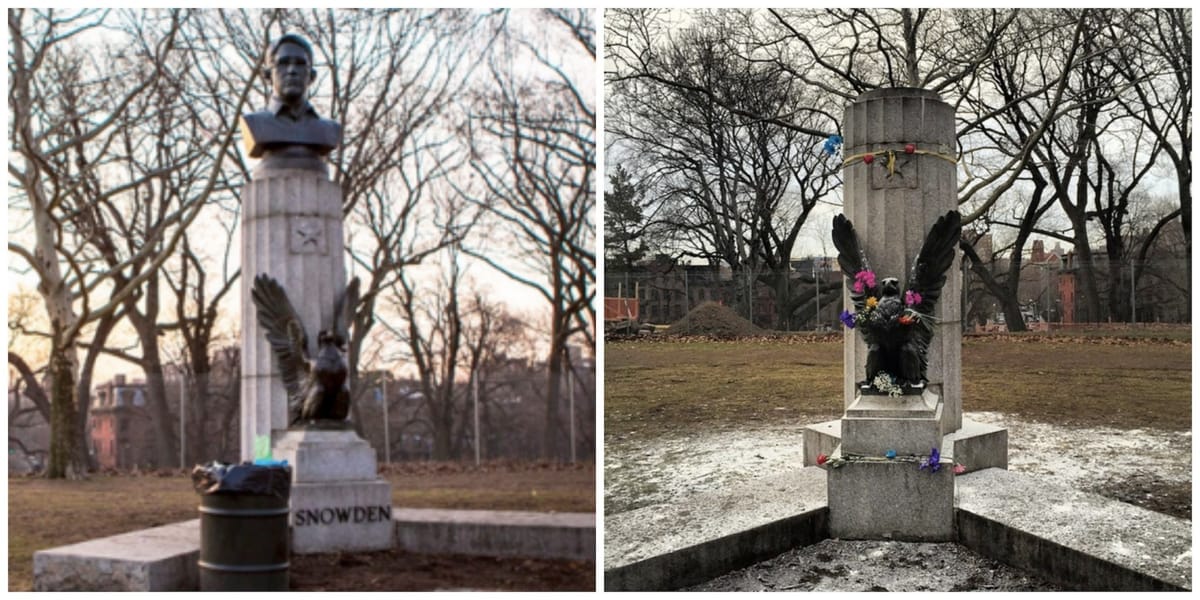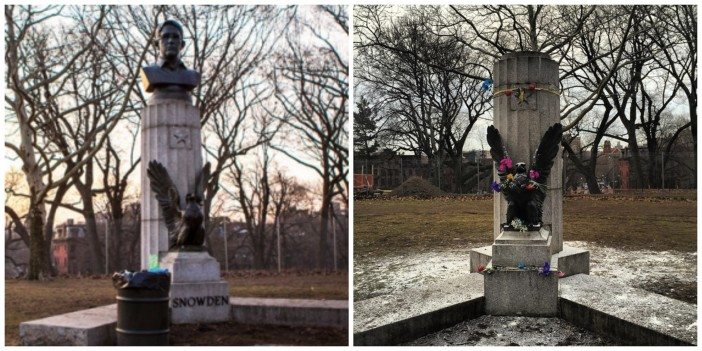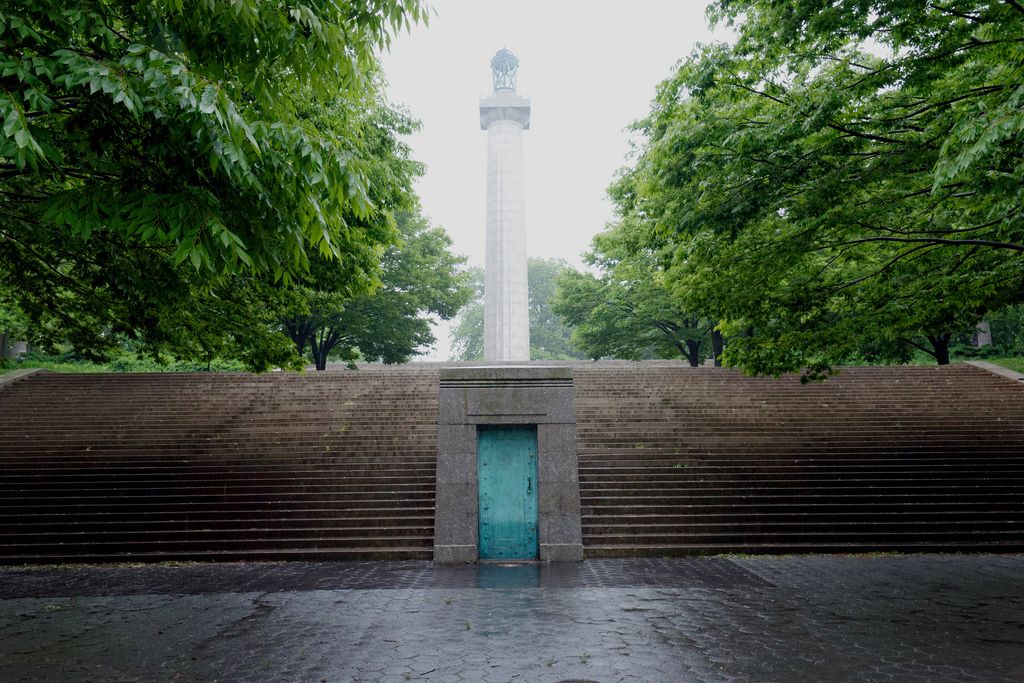Art, Protest, And History: Residents React To Snowden Bust’s Removal From Prison Ship Martyrs Monument


The response to both the secretive placement — and swift subsequent removal — of the Edward Snowden bust from one of the pillars of the Prison Ship Martyrs Monument inside Fort Greene Park has been as impassioned as the former NSA contractor was and still is about why he leaked classified information to the media, thus revealing government secrets and indiscretions to the world.
“Vandalized?”, some Fort Greene Focus readers asked, incredulously, in response to our initial post yesterday. “‘Vandalized’ awesomely, you mean,” joked reader Jeremy Friedman.
“I think it’s in the same vein as Banksy — art not vandalism — and Pussy Riot, protesting against a government,” said Ed Goldman, a resident and member of Fort Greene Peace. “It seems to me that great art was usually not sanctioned by stakeholders and not considered appropriate, either in content, style or placement. Many of the great artists of the 19th and 20th century were considered practically heretics.”
From an artist’s standpoint, Fort Greene resident and interior designer Ann Preston agreed, noting that the four-foot-tall,100-pound statue itself “looked very impressive” in photos online and she was “kind of disappointed that it isn’t still here as an expression of freedom and art.”
Even out-of-towners like Levi Gleghorn and Matthew Miller agreed. The 20-something friends from Oklahoma were visiting the monument as part of a New York vacation and saw the Snowden bust before, during, and after its removal. Told of what had transpired, Gleghorn said the artists “made an interesting point, comparing prisoners-of-war in the past to Snowden’s current situation.”
The Snowden bust creators themselves described their goal as to “update this monument to highlight those who sacrifice their safety in the fight against modern-day tyrannies. It would be a dishonor to those memorialized here to not laud those who protect the ideals they fought for, as Edward Snowden has by bringing the NSA’s 4th-Amendment-violating surveillance programs to light. All too often, figures who strive to uphold these ideals have been cast as criminals rather than in bronze.”
However, not everyone was as enthusiastic and understanding of the artists’ actions.

Ron Schweiger, president of the Society of Old Brooklynites, which hosts annual commemoration tributes to the 11,500 Revolutionary War prisoners-of-war who died while being held captive on British prison ships — and whose remains are buried beneath the Monument, which is a candidate to become a national monument under the jurisdiction of the National Park Service — was disappointed in the choice of location.
“I believe if these artists wanted a better way and better location to put forth their grievance they should have chosen a different venue rather than desecrate this sacred site,” Schweiger said in a statement.
Society Vice President Ted General agreed. “It’s an outrage and unconscionable that a group of misguided artists would disrespect such a hallowed burial site, which contains the actual remains of 11,500 patriots from the American Revolution,” said General. “We are deeply grateful to the NYC Parks Department for moving quickly and decisively to have this bust removed.”
According to 17-year-old Brianna C. of Flatbush, “[the artists] had the right idea, but they didn’t handle it properly. It is a form of vandalism. Even if the message is strong behind it, they still shouldn’t do that here. If I wanted to paint on someone’s house, it’s still wrong.”
The Parks Department has not commented on the matter, but Charles Jarden, chair of the Fort Greene Park Conservancy, noted that they are prepared for situations like this in parks around the city, and when he first heard about the Snowden bust, he “was trying to figure out why they chose our park.
“I think it’s kind of a prank, where they saw those stanchions with nothing on top of them — they were designed to have a light — so they thought of it as low-hanging fruit. rather than a deep-seated connection.”
The artists, however, seemed to consider the location as part and parcel of their message.
Our goal is to bring a renewed vitality to the space and prompt even more visitors to ponder the sacrifices made for their freedoms. We hope this inspires them to reflect upon the responsibility we all bear to ensure our liberties exist long into the future.
The bust itself remains in the custody of the NYPD’s 88th Precinct during the ongoing investigation, but the artists have noted that as they still have the statue’s mold, as well as 3D renderings, they may deploy “an army of mini-Snowden heads” in the future.
In the meantime, protest art collective The Illuminator (which was initially formed during Occupy Wall Street) recreated the Snowden statue early Tuesday morning, via hologram.
“Our feeling is that while the State may remove any material artifacts that speak in defiance against incumbent authoritarianism, the acts of resistance remain in the public consciousness,” the collective wrote in a statement. “And it is in sharing that act of defiance that hope resides.”
So, is it art? A prank? Protest? Desecration? Is there room for overlap and mutual respect toward a common goal or interest? What do you think?




